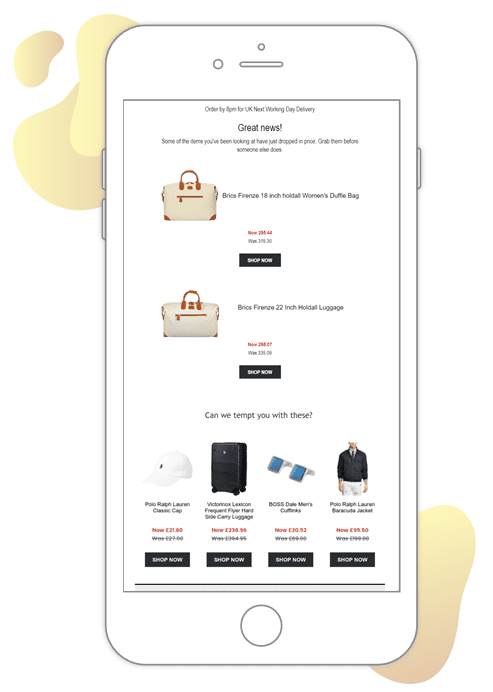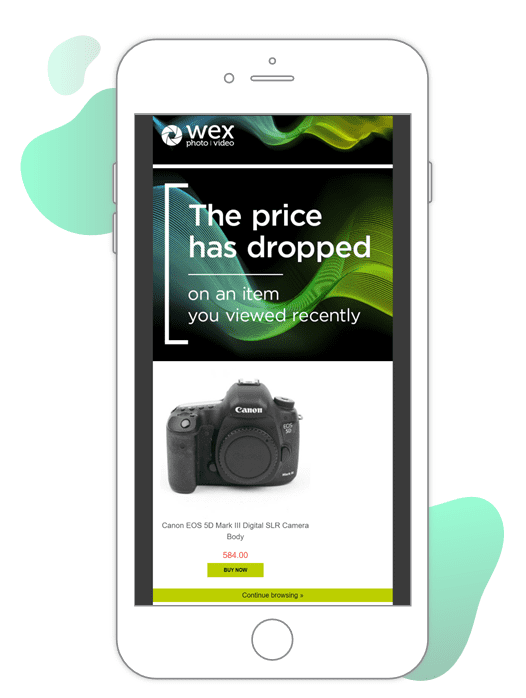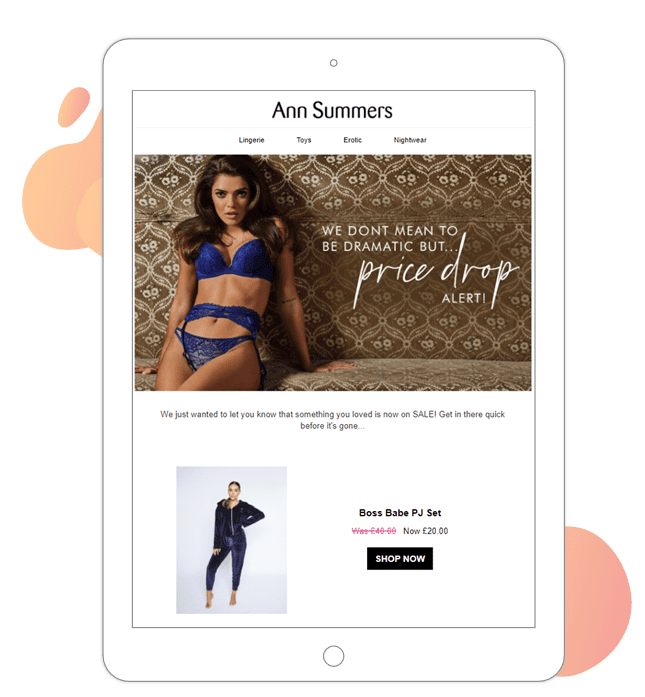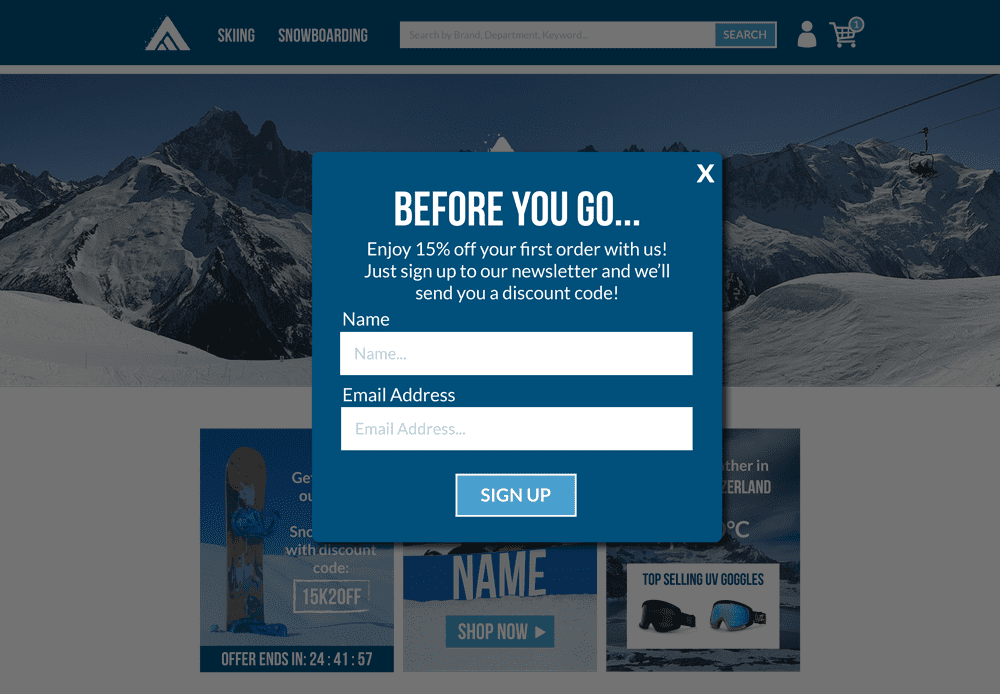Browse abandonment emails are proven to deliver revenue. In fact, the average Fresh Relevance client doing browse abandonment makes $30K extra sales for each $1M of turnover.
But if you’re looking to add another trigger to your repertoire beyond shoppers simply browsing your website, consider implementing price drop emails.
Price drop emails are the perfect reminder for impulsive online browsers. They also encourage price-conscious shoppers and increase loyalty. Plus, a price drop email program provides shoppers who haven’t shared their email yet with a great reason to do so and allows you to break free of the cycle of offering incentives with every shopping recovery email.
The results speak for themselves – this specific type of browse email is proven to yield an average sales uplift of 3%.
How price drop emails work
Price drop alerts inform shoppers of discounts to their favorite products outside of a formal sale. They’re a type of triggered email that lets everyone who has shown interest in a product know that it just got cheaper and that they can save money buying your product now.
A price drop alert email works in a similar way to other triggered emails. For shoppers who have opted into your email marketing, their browse data is captured and stored. When you drop a price in your ecommerce system, the alert is automatically triggered.
Details of the item browsed (including images) are inserted into the email to make the offer more compelling (you’ll create a template for this when you set up the program). You don’t need to do any manual configuration and the emails are sent via your organization’s own ESP, giving you full control of the creative element of the message.
To notify browsers of the price change, you can either trigger a price drop alert as a daily or weekly standalone batch email so that customers can track prices, or include it in bulk emails such as newsletters as well as browse and cart abandonment emails.
Price drop email programs are not all created equal. Features that offer the flexibility to allow the creation of specific price drop programs are critical. Instead of emailing about a large sale across multiple categories, you might want to target messaging around price breaks for specific products or in niche categories, for example to clear your warehouse of excess stock.
Examples of price drop emails
Here are three price drop email examples to inspire you.

Country Attire follows best practice by including details and images of the browsed items to jog the recipient’s memory. By recommending additional products that have dropped in price, Country Attire can showcase a wider range of their inventory, encouraging shoppers to add more items to their carts.

The big header text helps shoppers know exactly what this email from Wex is about. As in the previous example, Wex also includes a prominent image of the browsed product to remind shoppers of the product they were looking at.

Likewise, Ann Summers makes their reason for emailing clear with their header text – including an image and details of the browsed product with the old and new prices.
Further benefits of price drop emails
Another benefit of a price drop email program is the potential to help you grow your email marketing list. To get the most out of this data capture technique you should use dynamic pop-ups, or targeted banners, as an additional incentive to encourage shoppers to sign up for your emails.

Discover the power of price drop emails
If you want a more personalized approach to sharing price break information or want to reach out to shoppers who browse but are hesitant to use browse abandonment emails, consider deploying dynamic price drop emails. Whether you want to encourage purchases in a specific category or clear out the warehouse, these emails are a great tool to have.
Discover five steps to easily optimize your campaigns and give email ROI a lasting boost in our guide to improving email performance.







